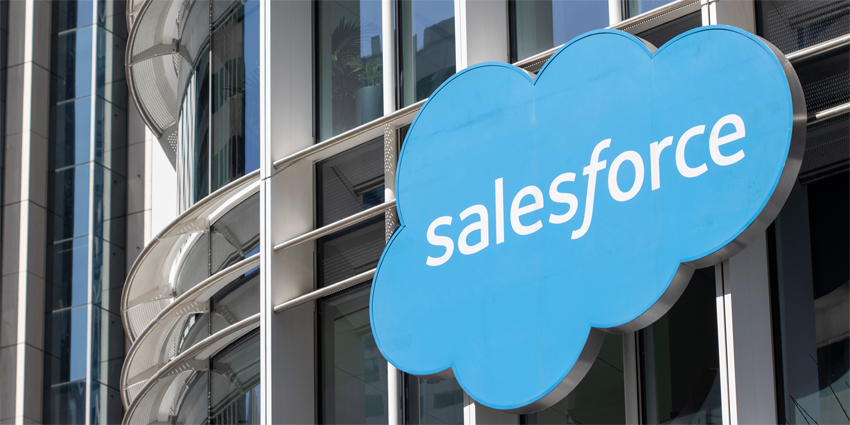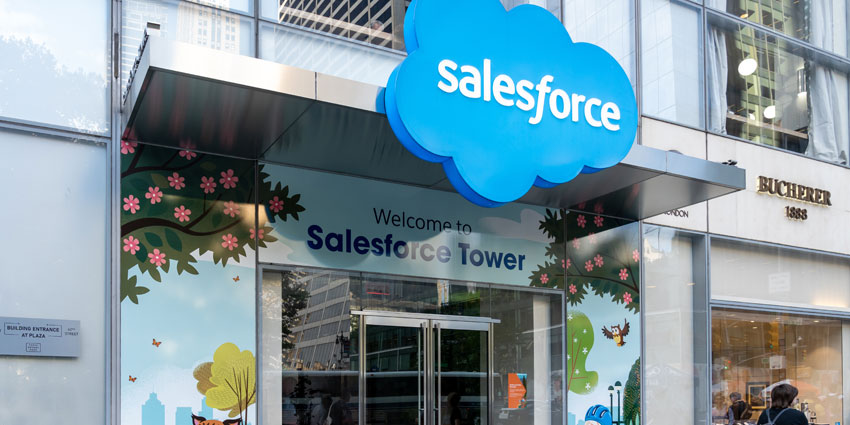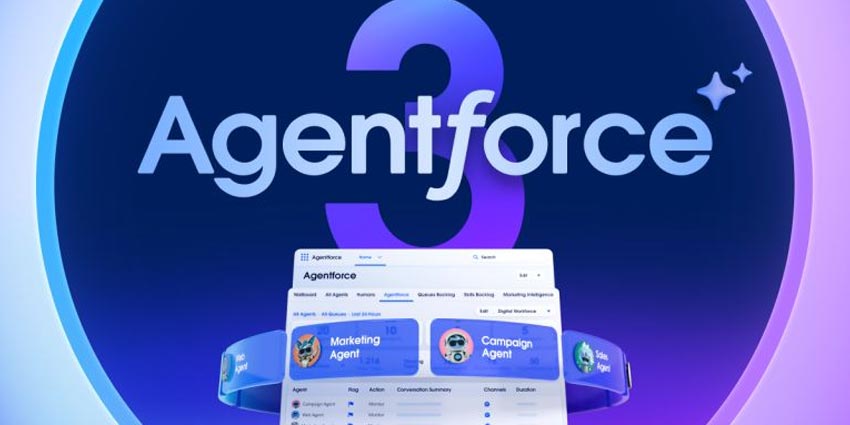Since the ongoing COVID-19 pandemic hit, the practice of building and maintaining relationships with customers has had to evolve rapidly. As a result, one of the principal means for achieving this – customer relationship management (CRM) software – has been required to bring in new features to facilitate new approaches to CX.
In this edition of the CX Today round table, we welcome:
- Gabe Larsen, VP of Marketing, Kustomer
- Inken Kuhlmann-Rhinow, Marketing Director, EMEA, HubSpot
- James Frampton, SVP and General Manager EMEA, SugarCRM
- Simon Thorpe, Ambassador Director, Pegasystems
Our panellists will discuss how the pandemic has affected customer engagement strategies, the major value centres within CRM today and the future of CRM in the wider customer experience field.
How has the pandemic affected customer engagement strategies/development from a CRM perspective?
Larsen: “Kustomer research found that 71% of consumers reported shopping online more frequently during the past year, and of those, 85% plan to continue shopping online more often post-pandemic. It is important to consider how new online shoppers will be interacting with businesses in a digital-first world. It’s not enough to simply be available on all channels anymore. Businesses must also deliver an effortless and seamless experience across the buyer journey, at scale. In order to achieve this successfully, agents must be free to move across channels through a single conversation and have a real-time view into historical interactions, so they know the context of the issue immediately. Additionally, when customers aren’t touching and feeling products in-store, pre-purchase, consultative support becomes imperative. Companies need a CRM platform that can surface relevant product information effortlessly, without the need for agents to switch systems and toggle between tabs. Lastly, many businesses are choosing to stay fully remote. Companies need to adopt a CRM that is easily connected to by all agents with a basic internet connection and standard browser, and allows for remote collaboration and oversight so businesses can manage their team with confidence.”
Kuhlmann-Rhinow: “Zooming back out to an organisational level, the pandemic has pushed leadership teams to fully embrace digital transformation. For many organisations, making remote work plausible meant pulling together capabilities from a range of technology providers into something of a patchwork of solutions that didn’t necessarily behave well together but was necessary given the organisational shock felt initially.
“Recognising that remote working will be a significant and constant part of our working landscape, it is now time to think about how to make this tech stack work more effectively. In many cases, this will involve consolidation, ideally onto a single CRM platform, where the sharing of customer and prospect data between marketing, sales and customer service teams is seamless and where the platform supports growth, instead of creating friction points.

“According to HubSpot’s Future of Sales Report UK, 40% of businesses have embraced using CRM software to understand and serve prospective customers -up from 25% before the pandemic-, being the only digital tool to see an uptick in usage during the lockdown. The findings suggest that CRM platforms have become even more relevant and necessary to support the quick responses our customers expect in a digital-first climate, and this is likely to continue as we tackle the headwinds throughout the year.”
Frampton: “Due to the pandemic, more businesses than ever were forced to embrace digital, even those that were apprehensive before. With the lockdowns came the need for online banking, virtual doctor’s appointments, and expansion of online retail. Higher consumer demand meant that businesses needed to focus on their CRM technology to keep their relationships going and ultimately survive.
“The pandemic also highlighted how little companies knew about their customers, due to poor CRM systems and the impact this is having on their ability to predict customer churn. In fact, Sugar’s recent research of sales leaders revealed that over half (56%) reported their customer churn increased in the last 12 months, with 57% of respondents having trouble predicting when customers would churn. And, upon reflection, almost half (48%) of sales professionals reported not knowing why customers churned. This is especially worrying when there are so many on-going uncertainties due to the pandemic.”
Thorpe: “In the hangover of the pandemic, customer satisfaction has plummeted to an all-time-low. Now they know more about customers, 74% of businesses are commitment permanently improving operations via digital transformation (DX).
“First, CX needs to be taken seriously at the C-level. IT is twice as likely to lead CX than another function, but before DX can transform CX, it must be led by a dedicated CX specialist.
“Low-code platforms bring business and IT teams together by empowering citizen developers from across the organisation to design and build customer-facing applications.
“Instead of slow, frustrating requirements-based approaches, teams can align their work and directly capture the business requirements – IT can focus on data and integration, business users and designers focus on personas and channels, everyone aligns around the central microjourney.
“With low-code, business and IT can build sophisticated, strategic applications in a system that regenerates new code as the underlying technology evolves.
“A volatile and interconnected world needs a new generation of agile digital platforms architected for change. These are designed for open ecosystems, multi-cloud, distributed environments and they weave together legacy data systems with cloud-based AI services and in-house applications to deliver streamlined, seamless experiences for customers, employees and partners.”
Where do the major value centres sit within the CRM offering today?

Larsen: “AI and automation are becoming essential for CX organizations. Oftentimes the most tedious tasks on an agent’s plate are manual and repetitive, and may not require human intervention. Luckily AI can automate much of this work. Chatbots are growing in popularity with both businesses and consumers, and can be used to answer basic queries, collect initial information, or direct customers to a help centre if human intervention is not needed. These interventions save time for both the customer and agent, and increase the time agents can spend on delivering personalized, empathetic support, building lifelong customer relationships.
“Beyond freeing up agent time, AI can also be used to arm support agents with all the information they need to quickly and accurately service their customers. AI support technology can suggest messages to send to customers based off of historical conversations and customer attributes. Sentiment analysis is another benefit of AI technology. By looking at the words and tone in a customers’ messages, the technology can identify how satisfied, or dissatisfied, a customer is, and escalate the issue accordingly. AI within a CRM platform, thus supercharges the agent, giving them the ability to handle more conversations in a more personalized manner, and transforming the contact centre into a profit centre.”
Kuhlmann-Rhinow: “Those getting CRM right are companies that understand that to grow better, they need to run better first. To scale in today’s world, businesses need to transform their operations internally to create remarkable experiences externally.
“In a moment when consumers are more demanding than ever before, customers won’t wait for your systems to catch up or for your team to discover the points of friction that are causing frustration. They don’t care about your complexity or that you don’t have the systems in place to understand who they are and what they want.
“In the current business landscape, companies – from startup to scale up and beyond – that have adopted a CRM platform as a single source of truth to align all marketing, sales and customer success teams will continue to be in a better position to deliver a delightful end-to-end customer experience as they scale.”
Frampton: “Offering a high-definition, customer experience (HD-CX) where the platform does the heavy lifting and creates a single unified customer journey is a major value centre. Today’s CRM offering should focus on a consolidated single data model, which prevents the need for synchronization across marketing, sales and customer service systems.
“Shockingly, our research has found that 50% of sales leaders admit that they cannot access customer data across marketing, sales, and service systems, leaving customer-facing team members without a clear picture of their customers. The gap in customer data, the millions of dollars lost to churn, and the lack of insight, prevents sales and business leaders from acquiring the intelligence they need to make both vital strategic and tactical decisions. Companies that manage to close the data gaps can improve the accuracy and completeness of their customer data, which in turn leads to an improvement in retention, an increase in revenue, and more predictable business outcomes.”
Thorpe: “Creating an emotional and value enhanced customer experience has been proven to lead to brand loyalty. So, every brand should be working towards achieving it with CRM.

“Memorable and connected experiences allow brands to differentiate service proposition and secure a customer for life. Loyal customers expect to be treated as such. So, customers don’t feel forgotten, brands need access to customer history. With a modern CRM that connects customer information from across disparate sources, brands can make sure that new channels like email, connected devices or mobile apps actually add value, rather than become a nuisance.
“Taking a proactive approach to customer service takes CX emotion a step further. With robotic process automation (RPA) which sends automated alerts based on specific rules and next-best-action AI technology which recommends the next step in a customer’s journey, brands can solve a customer’s problem before they have to seek out a solution themselves.
“By being proactive brands can undercut competition by being the first to offer a relevant product/service, but it also saves customers time and reduces the stress of comparing options. Overall, a proactive approach helps to retain customers, boosts satisfaction and adds value in the form of convenience.”
What is the future of CRM in CX?
Larsen: “According to recent Kustomer research, younger generations plan to continue to do their shopping in a direct-to-consumer fashion, and businesses should take this into account when planning out their customer service strategy. While older generations reported that most of their customer service conversations occur after making a purchase, consumers under 25 had a completely even split across pre-, during, and post-transaction conversations. This means customer service organizations must prepare for a ‘new normal’, where the majority of their customers will be shopping online and require more consultative support throughout the buyer journey. As younger generations begin to age and become the heads of household, businesses must ensure their CRM platform can arm support agents with all the information they need to deliver on these new consumer expectations. That means intelligently surfacing product information, allocating low level tasks to intelligent automation, and tapping into AI to super power agents with suggest actions and next steps. A platform that brings all the data about a customer into one place helps customer service agents understand the context of a customer’s conversations and enables them to deliver more efficient, proactive and relevant services.”
Kuhlmann-Rhinow: “According to HubSpot research, 50% of business leaders say that their CRM is challenging to use, and 76% report their team doesn’t use the majority of their CRM tools. What’s even more alarming is that 47% believe their software is incapable of helping them meet their business goals over the next three years.
“Customer experience is a top priority for today’s business leaders, and the role of CRM will become increasingly important in the years to come. To scale without adding complexity, businesses need better data that gives insights into each customer’s experience and leads to actionable insights for a seamless and contextual experience across all touchpoints. Companies looking to provide the experience that their customers expect need powerful and easy-to-use CRM platforms that enables their marketing, sales and service teams to see each customer’s journey as a whole.
“There are three things, in my opinion, will become crucial:
- The quality of data. Capabilities like machine learning and artificial intelligence are improving at an incredible rate, but their effectiveness relies on data quality. There will be more emphasis on data freshness and quality, as well as improvements in business intelligence.
- The way channels continue to change. Customers’ expectations of messaging platforms, chatbots, and voice assistants will continue to grow.
- The no-code movement, which empowers business users to be able to do ever more things without having to file a ticket and wait for somebody else.”

Frampton: “The future of CRM looks towards leveraging AI. Companies are increasingly recognising it to be an important part of process management and decision-making, especially for businesses with high levels of customer engagement. AI really comes into its own once you have a complete view of your customers with accurate ‘past’ and ‘present’ data. By combining this with external data you can then leverage AI to make accurate predictions on your customers’ future demands. This results in better business decisions, better management of risk, and ultimately better customer relationships. If we let the platform do the work, it allows customer-facing staff to get on with delivering real value, rather than spending their time updating and managing technology. Currently, our research shows that most salespeople only actually spend 49% of their time actually selling, the rest goes on admin.
“Longer-term, I think we will continue to see the incorporation of sales, marketing and customer support under one umbrella to create a unified customer journey. Customer experience as a job role and business function will rise in prevalence outside of high-tech companies and into more traditional organisations.”
Thorpe: “Hyperpersonalisation will be the next step in CRM. However, individual factors will define what hyperpersonalisation looks like and what the benefits will be.
“CX empathy will be a significant factor. If brands can achieve empathy at scale with AI, they can react appropriately according to each customer’s unique context. AI has the potential to eradicate the risk of neglecting customers by calculating when a customer becomes likely to leave. At that point a brand can offer an appropriate response, such as a subscription freeze, extended repayment plan, etc.
“Brands can even prioritise customers in terms of need like UK debt charity StepChange did with its candidate suitability analysis. Organisations which receive vast volumes of customer requests can apply natural language processing (NLP) to messages that analyses urgency.
“This approach allows brands to behave more ethically, but also to protect relationships with customers for the long-haul. If they take care of customers during their time of need, they will retain those customers when the time is right to up-sell.
“Using technology and the right messaging at the right time, brands can create an empathetic experience that has been tailored to the individual and makes a real impact on their lifestyle.”







